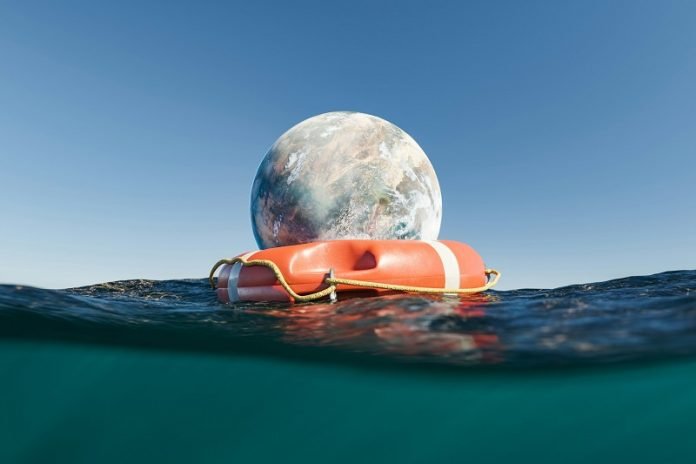
In a thrilling leap forward for astronomy, scientists have uncovered a fascinating link between water and the birth of planets.
For the first time, they’ve found water vapor swirling around a young star, right where new planets might be coming into being.
Water isn’t just crucial for life as we know it on Earth; it also plays a significant role in how planets form.
However, until this groundbreaking discovery, astronomers hadn’t been able to track how water is spread out in the stable, cool disks of dust and gas surrounding young stars—conditions that are perfect for planets to start forming.
The star of the show, quite literally, is the Atacama Large Millimeter/submillimeter Array (ALMA) in Chile.
This impressive collection of telescopes, situated in the Chilean Atacama Desert, made this discovery possible.
The University of Manchester’s Jodrell Bank Centre for Astrophysics, which hosts the UK ALMA Regional Centre Node, has been instrumental in this research.
Dr. Anita Richards, a leading figure from the University, highlighted the significance of directly measuring water vapor in regions where planets form.
This achievement brings us closer to understanding the formation of potentially habitable worlds, raising questions about when and how these worlds acquire water.
The recent observations were published in the journal Nature Astronomy and focused on a young, sun-like star called HL Tauri, situated 450 light-years away in the constellation Taurus. The findings were astonishing: the inner disk around HL Tauri contains at least three times as much water as all of Earth’s oceans combined.
Stefano Facchini, an astronomer at the University of Milan who led the study, expressed his amazement at being able to capture an image of such vast amounts of water vapor in a region where a planet could be forming.
Leonardo Testi, another key astronomer involved in the study from the University of Bologna, Italy, remarked on the remarkable ability to not just detect but also visualize water vapor so far from Earth.
This discovery was made in a part of the HL Tauri disk known to have a gap, suggesting that a new planet might be forming there.
This gap, and possibly others like it, are created by young, planet-like bodies gathering material and growing, carving out spaces in the disk.
Capturing such detailed images of water in space is no easy task, especially with a ground-based telescope like ALMA. The Earth’s atmosphere is full of water vapor, which can interfere with observations.
However, ALMA’s location—at about 5,000 meters elevation in a dry environment—minimizes this issue, offering exceptional conditions for observing the cosmos.
The discovery also touches on the process of planet formation itself. Dust grains in these disks are the building blocks of planets, gradually colliding and sticking together to form larger bodies. Scientists believe that regions cold enough for water to freeze onto these dust particles are ideal for planet formation, as the icy coating helps things stick together more efficiently.
Looking ahead, the UK ALMA Regional Centre is working on major upgrades for ALMA, which, along with the upcoming Extremely Large Telescope (ELT), will offer even clearer insights into how planets form and the role water plays in this process.
Specifically, an instrument called METIS on the ELT will allow astronomers to see the inner regions of these planet-forming disks in unprecedented detail, shedding light on the birth of Earth-like planets.
This discovery not only expands our understanding of the universe but also brings us one step closer to answering the age-old question: Are we alone?



